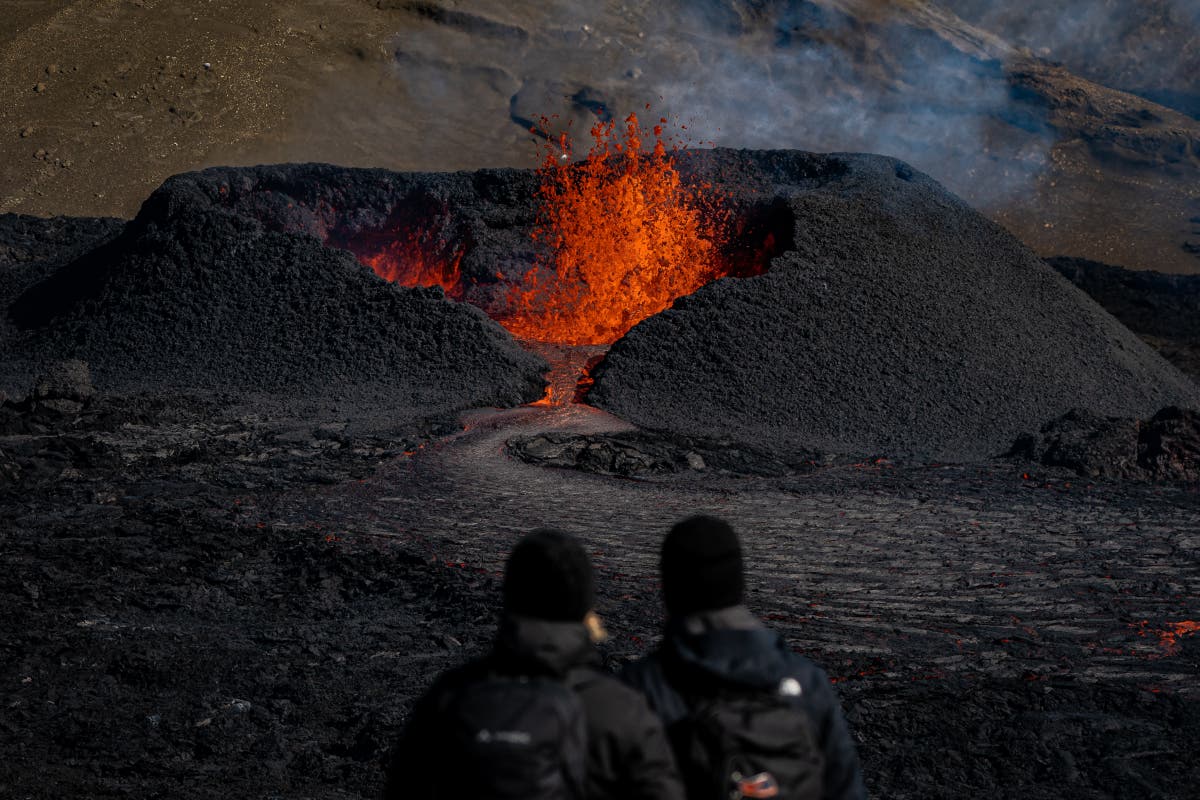
The sky burned crimson as flames licked the horizon. While wildfires wreak havoc in other parts of the planet, the infernos engulfing parts of Iceland burn deep from within the earth’s core.
Last week, the Nordic nation experienced another volcanic eruption along the southern Reykjanes Peninsula, an area straddling the Mid-Atlantic Ridge where the North American and Eurasian tectonic plates converge. In a geological system that has laid dormant for 800 years, this was the ninth event since 2021.
Volcanic eruptions, lava flows and seismic activity have become part of daily life on an island constantly reshaped by the powers of nature.
“Scientists can predict roughly when another eruption might happen,” said my guide, Gunnar, as we drove from Keflavik International Airport, a 20-minute ride from the restless peninsula. “But nobody ever knows for sure.”
Read more on Europe travel:
When I visited the country two weeks prior to the latest eruption, residents were already anticipating new fissures and fires. A dark wall of lava sloped along the road to iconic geothermal spa the Blue Lagoon, evidence of an eruption earlier this year which wiped out nearby town Grindavik, forcing 4,000 people to abandon their homes.
Road signs struck through with a red line were a chilling reminder of the speed with which molten magma can erase a town.
On several occasions, lava flows have come dangerously close to The Retreat, one of Iceland’s most luxurious hotels. When I arrived, plans were already in place for an evacuation – a drill the team now know all too well.
Safety precautions already in place include a network of gas meters capable of detecting eruption-related air pollution. A sophisticated and well drilled evacuation system can get guests to safety safety within an hour.
Anywhere else in the world, building so close to active volcanoes would verge on suicidal. But in Iceland, every patch of land is potentially volatile. Besides, the cause of so much destruction is also the foundation of the hotel’s main attraction.
Part of a global geopark, The Retreat neighbours the Blue Lagoon – a super-sized spa filled with a mixture of seawater and fresh water heated 2,000 metres below the earth’s surface in volcanic aquifers.
While the origins of the site’s source extend back thousands of years, it was first discovered in the 1970s, resulting in construction of the Svartsengi Resource Park, which provides geothermal energy to the country. In the 1980s, residents started bathing in a reservoir that had formed in lava fields nearby.
Metal pipes curving from the industrial powerhouse add an oddly dystopian appeal to an area that already feels as if it belongs to another planet.
When I first visited the Blue Lagoon 20 years ago, crowds were already coming to bathe in the naturally silica-rich, therapeutic spa. Wading through the sky-blue waters, faces covered in white mud packs and carrying pints in their hands, they glided through clouds of steam.
Today, the site attracts more than 700,000 visitors per year – a consequence of Iceland’s growing popularity as an adventure destination and a stop off for flights to the USA (a short drive from the airport, it’s easy to squeeze the Blue Lagoon into a trip).
Built into the lava flow and opened in April 2018, the 60-suite Retreat gives guests private access to the same waters without any crowds. In the reception, where breakfast and afternoon tea are served, windows overlook the inviting, milky abyss – although a bathing section extends from the subterranean spa.
Taking advantage of one of Iceland’s few sunny days, I sank into the warm, soothing lagoon soon after checking in – hoping an evacuation wouldn’t happen while I was still in my dressing gown.
Making the most of the magic waters, The Retreat offers guests a multi-step 45-minute Blue Lagoon Ritual, using many of the products developed using the area’s potent minerals. I scrubbed my body with exfoliating salts, smothered a thick algae face mask on my skin, and cleansed with a silica cream.
Bioactive microalgae found here supposedly stimulates collagen and has anti-aging benefits. The process itself was mind-focusing and relaxing, but the results were astounding – my skin glowed with the power and richness of a fresh lava flow.
Wellbeing, a core value of The Retreat, is not only concentrated on external appearances. Overseen by executive chef Aggi Sverrisson, the Michelin-recommended Moss Restaurant serves a menu of Icelandic dishes presented with a flair and drama befitting of the surrounding volcanic landscape. My beetroot, hazelnut and pistachio soup arrived below a plume of steam, while an explosive chocolate dessert resembled a lava rock.
Forced to close for a few days following the latest volcanic activity, the Blue Lagoon has already reopened. Plans to enhance the site, add new features and create a new access road are also still going ahead.
It demonstrates the resilience of a population who have learned that in the land of fire and ice, life will always be dictated by the landscape.
“We go about our daily routines: work, cooking, hanging it with friends – while the earth is literally reshaping itself right next door,” posted Icelandic influencer Asa Steinars on Instagram.
“But there’s a certain peace in that realisation too. The planet has its own rhythm, one that’s going to keep going long after we’re gone.”
How to do it
Entrance to the Blue Lagoon costs from 9,900 ISK (£54). A Moss Junior Suite or Lava View Junior Suite starts from 220,000 ISK (£1,245) per night with a minimum two-night stay; bluelagoon.com
Read more: Escape the south coast crowds for the natural wonders of North Iceland’s Diamond Circle
Source: independent.co.uk


